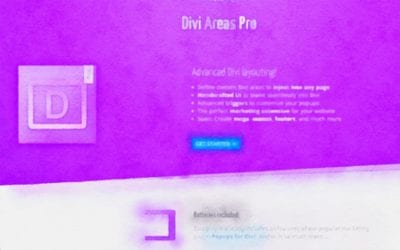Most business owners have optimized or started optimizing their websites for mobile device traffic.
And it’s clear why – mobile accounts for more than half of the global Internet traffic, and by 2025, the number of active mobile devices is expected to reach over 18 billion!
Approximately 86% of the world’s population uses a smartphone, which is way more than the percentage of people with a PC or laptop access.
In fact, most people use only smartphones as their new ‘personal computers’, and mobile web traffic has continued to rise throughout the years.
However, most websites aren’t optimized beyond the default mobile responsiveness settings. In many cases, setting the layout to fit smaller screens is not enough when you need to consider site speed, UX, and design into the equation as well.
With so much mobile traffic, it’s very likely that your potential customers won’t stay on a website with a terrible mobile UX, and they’ll look for the required information elsewhere.
If the expected primary source of web traffic from your target customers is mobile, you need to start thinking about the website’s design from the mobile user’s point of view instead of a desktop one.
Luckily, we already know how powerful the Divi theme is, and how it can help us optimize our web projects for greater mobile responsiveness.
Table of Contents
- 1.Make Use of Divi’s Mobile Support
- 2. Start Thinking Mobile-First
- 3. Make Your CTAs Prominent
- 4. Always Be Testing
- 5. Improve Your Site’s Speed
- 6. Opt for Touch-Friendly Elements
- FAQs About Mobile-Responsive Design
- Wrapping Up
1.Make Use of Divi’s Mobile Support
Without a doubt, Divi is one of the best responsive themes in the WordPress space. You can’t go wrong by using it for your website. It’s responsive power as a theme is what enables designers and developers to adapt the site to every device.
Since there are numerous different screen sizes and mobile devices, with each new device release you have a new mobile screen as a challenge for your Divi website, which means that in most cases, your website’s responsiveness will never be inch-perfect for every device.
But luckily, Divi provides a multitude of responsive features for customizing the various aspects of your website and getting your website’s mobile responsiveness close to perfection.
Responsive Editing and Hover
This feature enables you to display different types of content to your website visitors according to the device on which they browse your website, providing you with additional control over the responsive design of your Divi website as a result.
The feature is available for every Divi module setting. It also offers Hover Editing for every Divi content option, which enables you to swap images, videos, and text on hover, creating dynamic hover effects in the process.
Divi Mobile Customizer
The Divi Mobile Customizer allows you to develop specific global styles for mobile traffic. Learn more about the feature on Elegant Themes or watch the video instead for a detailed tutorial:
Srcset Support for Responsive Images
The native SRCSET support for Divi images means that the theme will automatically make your images responsive and display the right image size for every device, which also improves page load speed.

2. Start Thinking Mobile-First
You’re already familiar that Google’s algorithm favors mobile-first designs over desktop. Back in 2010, Eric Schmidt, then-CEO of Google, announced the following at a company press conference:
“Mobile will be the way you provision your services. The answer should always be mobile-first. You should always put your best team and your best app on your mobile app.”
When optimizing your Divi website’s mobile responsiveness, thinking mobile-first matters. This means focusing on the essential elements of your pages and how they look like on mobile screens and focusing on the desktop experience only afterwards.
If your Divi website is displayed excellent on mobile devices, it means that its content has a greater chance to be communicated better on every other device. Mobile-first means content-first. Let’s have a look at an example from the Penny Hoarder website.

- The brand name and logos are up top, which is key for the mobile design hierarchy, and lets the users know that they’re at the Penny Hoarder ready to read money tips and articles.
- Website visitors can see the articles immediately. The Penny Hoarder is content-first above all. Most users arrive on the website to read articles, that’s exactly what they provide.
- Any additional page can be found in the hamburger menu. With that, when users want to see the About Page or Contact, they can find it there.
This is an excellent example of a mobile-first website hierarchy and the simplest method to achieve a great mobile-first design. That’s right, the best mobile website design is simple.
Mobile users don’t want to be burdened with too many ads, popups, and any other additional content when they browse your website, and whatever doesn’t add value to the mobile-first experience, you should leave it for your desktop version, or scrap it altogether.
For a detailed overview of working with Divi’s mobile-first approach, visit the Elegant Themes tutorial here, or watch their video tutorial instead:
3. Make Your CTAs Prominent
If you’re providing a particular product/service to your target customers, chances are, you have a particular CTA in mind that you want the users to act on.
To motivate them to click on the specific CTA on their mobile devices, you need to create prominent CTAs and make them visible to users as soon as they open your website.
Let’s take a look at the OptinMonster website for example:

When viewed on a smartphone, this is a website that clearly outlines what the product does for the customers and the value that the company provides, even when viewed on mobile devices.
They also have an additional CTA for watching a video below the main call-to-action to ensure that prospects stay interested in the product.
This is critical because users are not forced to access a separate page to go to the main product, which can get problematic on a smartphone because of the smaller screens or the occasional slow wireless Internet connection. Users want to get to the point faster, and you need to be right there for them with your CTA.
4. Always Be Testing
No matter the process you take for optimizing the mobile responsiveness of your Divi website, to achieve the best results, you need to continuously test and optimize your Divi pages.
Here’s what you need to pay attention to:
- Navigation: On any given mobile screen, users will look for the hamburger menu. Ensure that it’s accessible and doesn’t contain any non-essential pages to the users.
- Fonts: Visually appealing mobile designs make use of fonts and typefaces for presenting the content to users. These fonts must transform to fit different screens for flawless mobile UX.
- Speed: Ensure that the website loads with the ‘speed of light’ to ensure that you won’t frustrate the users when accessing the site on their smartphones.
- Alignment: We’ve all accessed a website on a smaller screen where the form is out of alignment, and we can’t click on the menu from the first try. To ensure responsive design, the elements’ alignment must be on point and that everything renders correctly.
Mobile-Responsiveness Testing Tools
We’ve put together this list with some of the most practical responsive website design testing tools and sites. Try them out and see which one you are most comfortable with.
Chrome’s Inspect Tool
Chrome’s code inspector also includes an option to test various how the pages are viewed on multiple screen sizes. On any given page, right-click and go to ‘Inspect.’ When the window opens, look for the devices icon next to the ‘Elements’ button.

This is excellent if you want to examine how the design of your pages adapts to various viewports.
Responsive Test Tool
This testing tool provides you with an extensive list of screen sizes to choose from, as well as an option to entire custom screen size requirements. Simply enter your website and check the change in design for various screens.

BrowserStack
BrowserStack is a web tool that enables you to access both the desktop and mobile version of your Divi website, used by many professionals for design testing. Even though it has a free version, the paid tier provides much more options for you.

Cross Browser Testing
Cross Browser Testing is a multi-functional browser testing tool that enables you to test your website for different screens and devices, and how it will be displayed on various browsers.

5. Improve Your Site’s Speed
Website speed is critical in today’s mobile-first world, and optimizing for better load times will help you instantly improve the mobile UX.
The following are some of the most effective performance optimization tips that you can use to speed up your Divi website:
- Use caching: With caching, lots of your website files won’t have to be downloaded every time a user accesses one of your pages, which means the resources will be served faster.
- Use a CDN: Instead of one server for delivering files to mobile users, you can use a CDN that stores copies of your website files in strategically located servers that help your site load files faster regardless of the users’ locations.
- Compress images: Large images can slow down your page, especially mobile versions of the page. By compressing images to acceptable sizes, you can increase page speed without affecting the quality of the images.
- Minify code. By minifying your site’s CSS, HTML, and JavaScript code, you can make it faster by several seconds, which is enough to keep smartphone users engaged.
- Update regularly: Using obsolete software will make your website vulnerable to security and performance issues. Thus, by regularly updating plugins and your Divi theme, you can avoid those issues for the mobile version of your website.
6. Opt for Touch-Friendly Elements
In the mobile-first era, designing websites for touch interaction is crucial to providing a seamless and user-friendly experience for visitors accessing your site on smartphones and tablets.

Mobile devices rely on touchscreens as the primary mode of interaction. Unlike desktops with precise mouse cursors, fingers are relatively larger and less accurate.
Therefore, it’s essential to design your Divi website with touch-friendly elements to ensure that users can easily navigate, tap, and interact with your content.
Key Considerations for Touch-Friendly Design:
- Larger Tappable Elements: Make sure interactive elements like buttons, links, and menus are large enough to be tapped comfortably with a finger. Divi allows you to adjust button sizes and padding, so take advantage of this feature to create spacious, easy-to-tap buttons.
- Adequate Spacing: Ensure there is enough spacing between touch elements to prevent accidental taps. This prevents users from clicking the wrong button or link when trying to interact with your site. Divi’s design options allow you to adjust spacing and margins easily.
- Responsive Design: Divi is known for its responsive design capabilities, which automatically adjust the layout and elements for different screen sizes. Emphasize the importance of responsive design to accommodate various devices and screen orientations (portrait and landscape).
- Avoid Tiny Links: Discourage the use of tiny text links or closely packed elements that might be challenging to tap accurately. Instead, recommend using descriptive, text-based navigation and touch-friendly icons where necessary.
- Use Gestures Wisely: While touch gestures like swiping and pinching can enhance the user experience, ensure that they are intuitive and enhance the user’s understanding of your content. Use gestures sparingly and provide visual cues to guide users.
- Test on Real Devices: Encourage testing on actual mobile devices to evaluate the effectiveness of touch-friendly elements. What works well on a desktop might not translate seamlessly to a touch interface.
- Accessibility: Stress the importance of accessibility for all users, including those with disabilities. Use Divi’s accessibility options to ensure that touch interactions are also accessible via screen readers and keyboard navigation.
Divi Tools for Touch-Friendly Design:
Divi offers several built-in features and tools to assist in creating touch-friendly elements:
- Button Customization: Divi’s button module allows you to customize button size, style, and spacing. Adjust these settings to ensure buttons are easy to tap.
- Spacing Controls: Use Divi’s spacing controls to add padding and margins between elements, improving touch targets’ accuracy.
- Hover States: When designing, remember that mobile devices don’t have hover states like desktops. Ensure that interactive elements are clear and provide feedback when tapped.
- Responsive Editing: Divi’s responsive editing options make it easy to fine-tune element placement and design for different screen sizes.
By optimizing your Divi website with touch-friendly elements, you enhance the user experience for mobile visitors, reduce frustration, and increase engagement. Users will appreciate the ease of navigation and interaction, making them more likely to stay on your site and convert.
FAQs About Mobile-Responsive Design
Does Divi automatically make my website mobile responsive?
Yes, Divi automatically makes your website mobile responsive by default. It uses a responsive grid system that adjusts the layout and column widths based on the screen size. However, it’s important to customize and optimize your content for optimal mobile viewing.
Can I preview my Divi website on different devices?
Yes, Divi includes a responsive preview feature that allows you to see how your website will look on different devices. You can switch between desktop, tablet, and mobile views within the Divi Builder to ensure your design looks great across various screen sizes.
Can I customize the mobile layout in Divi?
Absolutely! Divi offers extensive customization options for the mobile layout. You can adjust fonts, colors, spacing, and even hide specific elements on mobile devices. Divi’s responsive editing features make it easy to tailor the design specifically for mobile users.
Does Divi support AMP (Accelerated Mobile Pages)?
Yes, Divi is fully compatible with AMP. You can create AMP versions of your pages using Divi’s built-in AMP integration. This helps improve mobile loading speed and enhances the user experience for visitors accessing your site from mobile devices.
Wrapping Up
In 2021, the above tips are critical if you want to provide an optimized mobile experience for your target users. If most of your website traffic comes from mobile devices, then providing an average mobile experience is no longer an option for you.
Do a thorough audit of the mobile version of your Divi website and keep the above responsive design practices in mind to determine if your mobile UX fits the contemporary mobile-first era that we operate in, or you need to make some changes to keep up with the standards.
*Work with our partner agency to take the mobile version of your Divi website to the next level!

Try Divi Areas Pro today
Sounds interesting? Learn more about Divi Areas Pro and download your copy now!
Many pre-designed layouts. Automated triggers. No coding.
Click here for more details






